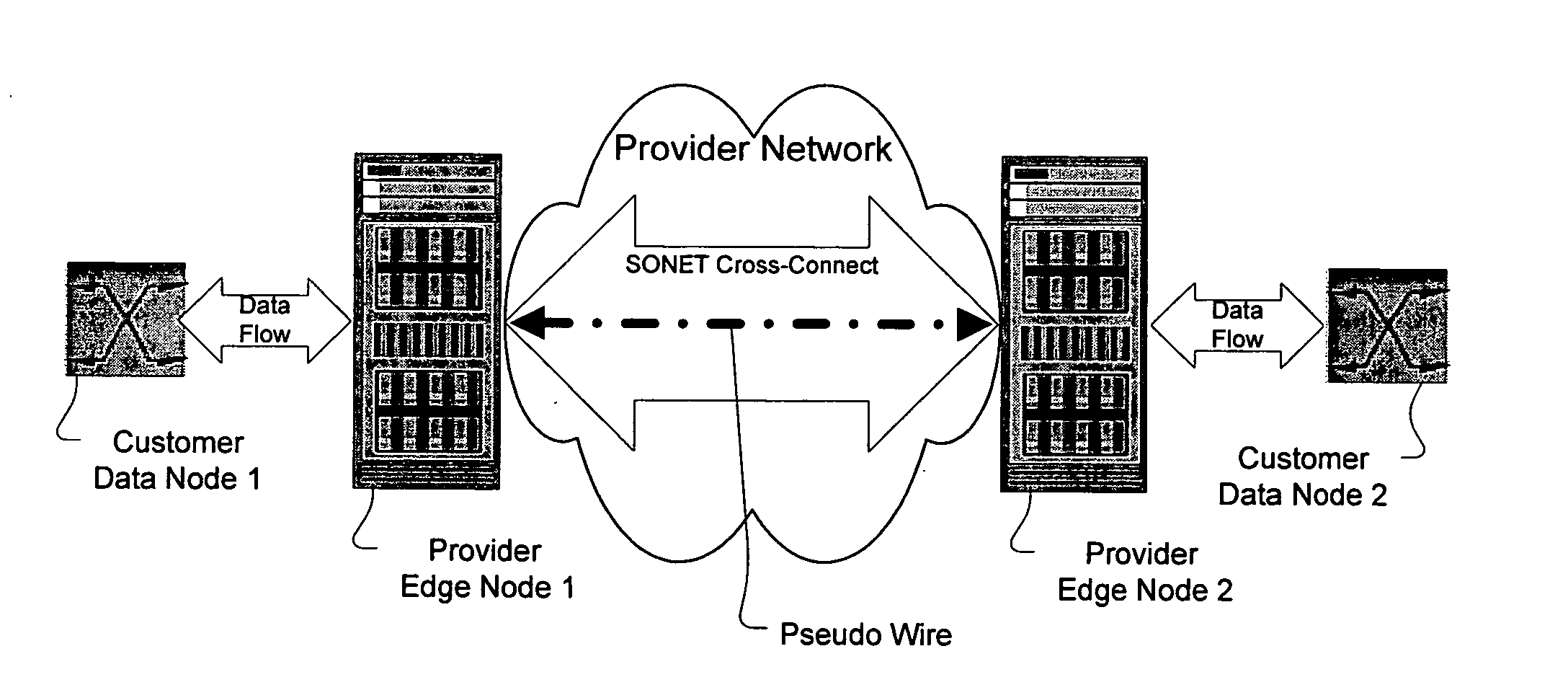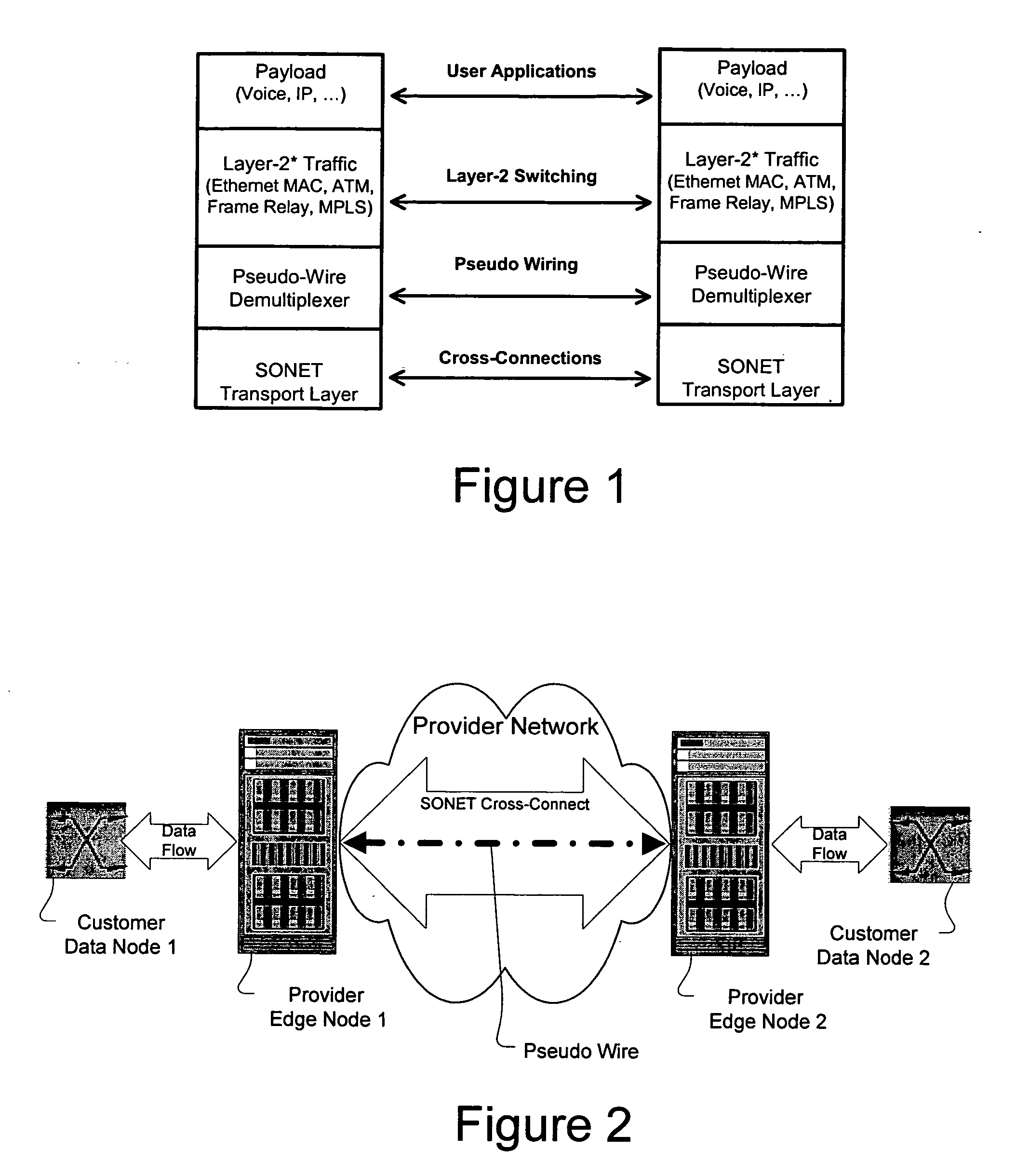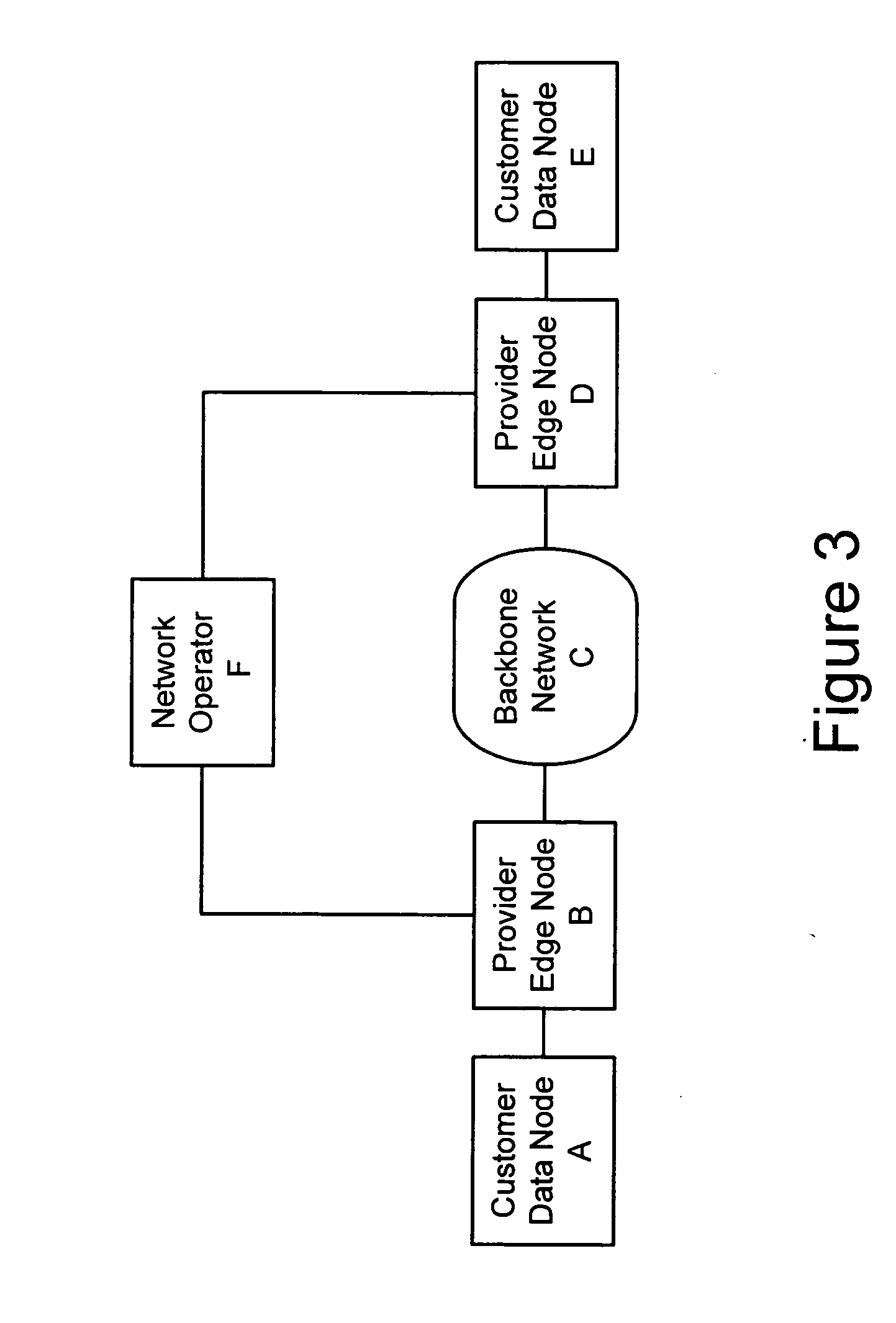Method and apparatus for performing data flow ingress/egress admission control in a provider network
a data flow and provider network technology, applied in the field of method and apparatus for performing data flow ingress/egress admission control in a provider network, can solve the problems of network utilization inefficiencies, inefficiency in utilization of circuit switched network capacity, and limited flexibility of circuit switched connection
- Summary
- Abstract
- Description
- Claims
- Application Information
AI Technical Summary
Problems solved by technology
Method used
Image
Examples
embodiment 1
[0290] Provider Edge Nodes C and H use signaling protocols, such as those described above in relation to embodiment 1 or by using LDP and draft-martini, to provision pseudo-wires. The result of the provisioning is to aggregate multiple data flows into a single data tunnel. Each data flow is represented as a pseudo-wire within the data tunnel as will be described in more detail below in relation to FIG. 31.
[0291] In addition to the pseudo-wire information that has been described above in the first embodiment, the second embodiment requires the provider edge nodes to exchange the following information for each data flow (or pseudo-wire):
[0292] CIR (Committed Information Rate): This information describes the amount of bandwidth that is required for a given pseudo-wire. This CIR information is essentially the same, in and of itself, as the CIR traditionally used in Frame Relay service offerings but is utilized by the invention in a completely different context and environment. CIR is de...
first embodiment
[0303] To interface with the provider backbone, one or multiple provider-interface line modules (not shown) should be provided as is known in the art. Such provider-interface line modules interface with the Packet-Access Line Modules 210 to inject packets into provider's backbone in the conventional fashion. Depending on the type of provider's network, they can be a conventional router packet forwarding module, a Layer-2 switching module, or a TDM switching module (see first embodiment above for an example).
[0304] Using or otherwise accessing the control module 200, network operators request the setup of pseudo-wires. The actual details of pseudo-wire setup have been exemplified and specified in other relevant documents [draft-martini, LDP] a significant variation of which is described above in relation to embodiment one. To support the second embodiment, the pseudo-wire process needs to maintain the following additional information within the databases shown in FIG. 24:
[0305] Sessi...
second embodiment
[0357] Operation Of Second Embodiment
[0358] The following sections describe the methods and operations of the second embodiment. These methods may be performed utilizing the elements described above or their equivalents.
[0359] Provisioning Pseudo Wires for Admission Control
[0360] This section describes the inventive method of provisioning pseudo-wires that permit admission control functionality. Following sections will describe both pseudo-wire shuffling and preemption according to the inventive concepts.
[0361] The provisioning of pseudo wires that will permit admission control functionality to operate is a process that includes the exchanging of specific resource information between PE nodes during the creation of pseudo-wires.
[0362] Setting up pseudo-wires (PW) may follow a procedure as defined in [PWE3-CTRL] or the procedure as defined above in the first embodiment. The second embodiment, however, modifies these provisioning processes to operate in context of and to otherwise per...
PUM
 Login to View More
Login to View More Abstract
Description
Claims
Application Information
 Login to View More
Login to View More - R&D
- Intellectual Property
- Life Sciences
- Materials
- Tech Scout
- Unparalleled Data Quality
- Higher Quality Content
- 60% Fewer Hallucinations
Browse by: Latest US Patents, China's latest patents, Technical Efficacy Thesaurus, Application Domain, Technology Topic, Popular Technical Reports.
© 2025 PatSnap. All rights reserved.Legal|Privacy policy|Modern Slavery Act Transparency Statement|Sitemap|About US| Contact US: help@patsnap.com



